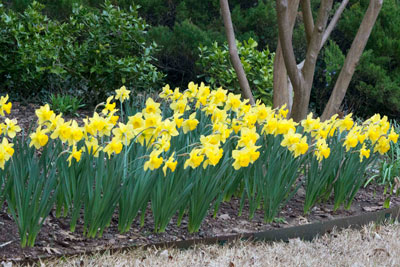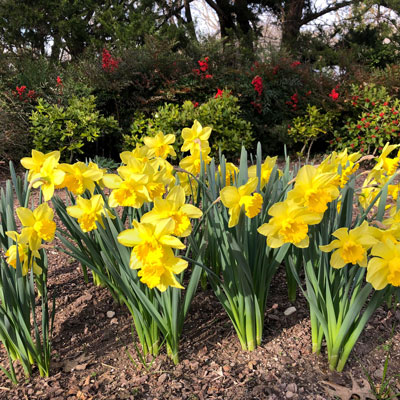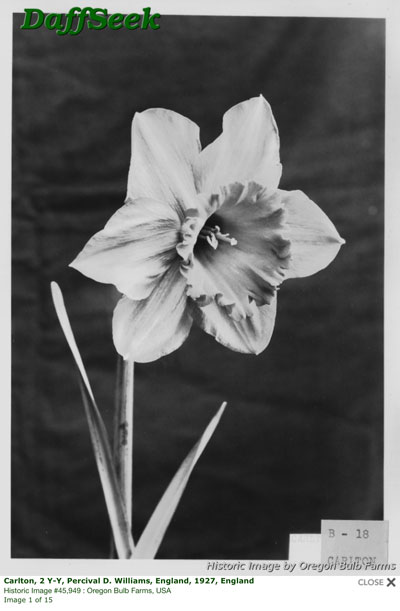‘Carlton’ Daffodils Still Tops

When you’re buying your daffodil bulbs in the fall for planting in late October or November, there are several things you’ll want to remember:
• Buy top-quality bulbs. They’re going to be with you for years, even decades. This is not the place to “go cheap.”
• Buy from a reputable source. That would be an independent retail garden center that specializes in bulbs or a national mailorder or online source that has outstanding reviews for selling only the best bulbs. Once again, beware of “bargain bulbs” sold by the mixed bag.

• Buy only varieties that are known to “repeat” under Texas conditions. That means that they’ll establish and come back year after year to produce more and more flowers each spring. Some types, like King Alfred, Unsurpassable and Mount Hood, are spectacular when they bloom their first spring, but they never produce flowers again – just multitudes of leaves.
• Some of the really good repeaters include: Carlton and Ice Follies (the two most popular types worldwide), also Cheerfulness, Yellow Cheerfulness and Geranium. And there are many others. For the most part, the key operatives are that you want “early” and “small or mid-sized” bloomers.
• Plant them where they can remain undisturbed for decades. Cluster the bulbs 4 or 5 inches apart, planting them into well prepared garden soil 2 to 3 times as deep as the bulbs are tall. They do not require chilling to bloom properly like tulips and Dutch hyacinths do, but you must leave their old foliage in place until it turns brown in late spring so that it can provide nourishment for the bulbs for next year’s blooms.

